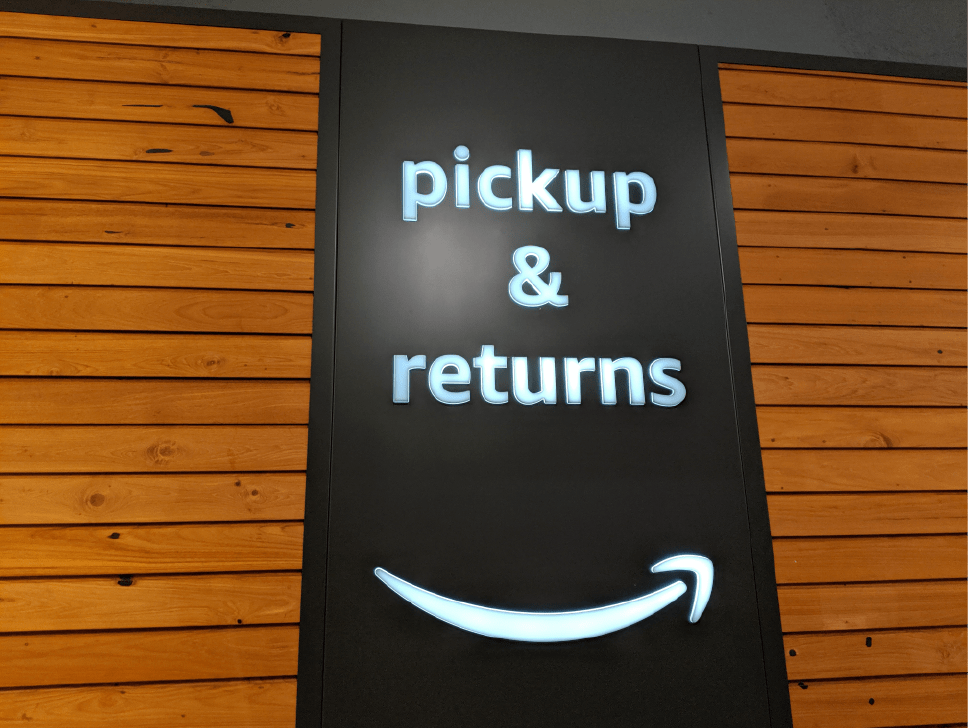Navigating the world of returns, replacements, and refunds on Amazon is a crucial part of running a successful business and keeping your customers happy, but it can also be pretty complex. Regardless, understanding these processes inside and out is essential for boosting your profitability and ensuring your buyers are satisfied.
That’s why we’re here to break it down and make it easier for you. Let’s dive in and simplify the ins and outs of handling returns, refunds, and replacements on the world’s largest online marketplace. We’ll even help you choose the best course of action for your particular situation.
What Are Amazon Returns?

Returns are an inevitable part of doing business on Amazon. Simply put, a return happens when a customer sends a product back because it didn’t meet their expectations, was missing a part, or arrived damaged.
Although the return process is pretty straightforward for customers, it can pose a significant financial burden for you as a seller. When a product is returned, you’re not only losing the initial sale revenue but also incurring additional costs associated with shipping and handling the returned item.
Moreover, not all returned products can be resold. Amazon assigns a grade to each returned item, and if it’s unsellable, you might have to bear the disposal costs. With 40% of returned items being graded as unsellable, these expenses can add up quickly and impact your bottom line.
Another concern is how returns affect your product ranking in Amazon’s search algorithm. High return rates can signal poor product quality, leading to a lower ranking and visibility.
Additionally, if your listing gets a high returns badge, it might deter potential buyers. Customers tend to avoid products with frequent returns, as they perceive them to be of lower quality. This badge can drastically affect your sales conversions.
So, while handling returns efficiently is crucial, minimizing them should also be a top priority for maintaining a healthy business on Amazon.
What Are Amazon Refunds?

When a customer isn’t happy with a product, they’ll typically ask for a refund. A refund means they want their money back instead of a replacement or repair. It’s a straightforward process: the customer initiates it, you approve it, and then the funds are returned to their account.
Refunds usually occur under specific conditions. If a product arrives damaged, or if it’s likely deemed unsellable when returned to Amazon—think perishables like food or flowers—a refund is the go-to solution. No one wants to deal with a smashed vase or wilting bouquet.
From a financial standpoint, refunds aren’t just a loss of the sale. You’re also out the costs associated with processing that refund. It might seem like a hit to your pocket initially, but consider it an investment in customer satisfaction. Happy customers are more likely to return and purchase again, and they’re less likely to leave negative reviews that could hurt your business.
It’s also cheaper in the long run, especially compared to returns because you can give refunds partially. Consider a multi-pack product where only one item has been damaged or compromised. With a partial refund, you only need to refund that single item’s cost instead of the entire pack, which saves you money and potentially avoids a return.
In short, while refunds can be a bit of a headache, managing them efficiently is key to maintaining trust and goodwill with your customers. The goal is to keep them coming back, even if the occasional transaction doesn’t go perfectly.
What Are Amazon Replacements?

Think of replacements as the golden ticket to customer satisfaction. When a buyer gets a faulty product, offering a replacement means swapping the defective item with a new, perfect one. It’s like hitting the reset button on the sale, and everyone wins.
Ideally, the process starts with the customer reporting the issue, often providing details or evidence of the defect through photos or a description. You then review and approve the replacement request, ensuring that the defective product meets the criteria for a replacement. Once approved, you arrange for the shipping of a new product, sometimes even expediting the process to further enhance customer satisfaction.
Financially, replacements are a smarter alternative to returns. While returns can cost you almost the entire sale’s value due to processing fees, restocking, and potential loss of the product, replacements often only cut your loss by about half. Additionally, replacements don’t mess with your product ratings or search results, keeping your online presence shiny and appealing.
This is crucial in maintaining a competitive edge in the marketplace. Customers leave happy with what they initially wanted, and you get to retain the sale while maintaining a positive image. This approach not only builds trust but also encourages repeat business and positive word-of-mouth referrals.
Financial Impact Analysis
Understanding the financial implications of returns, refunds, and replacements is crucial for maintaining a profitable Amazon business. The table below breaks down the costs associated with each scenario, highlighting why replacements are the most cost-effective option.
- Sale: This column represents the financial outcome when a product is sold without any issues. After deducting all related expenses such as referral fees, FBA fees, storage, shipping, advertisement, and cost of goods, the net profit stands at $6.09. This illustrates the ideal scenario where the sale goes smoothly, contributing positively to your bottom line.
- Return: When a product is returned, the financial impact is significantly more severe. In addition to losing the initial sale revenue, sellers incur costs such as the initial order FBA fees, removal order fees, and potential disposal costs for unsellable items. The net result is a substantial loss of $22.31 per returned item. Additional fees may be imposed if you are above the returns rate threshold for your product category. Returns also negatively affect your product ranking and may result in a high returns badge, further deterring potential buyers.
- Replacement: Offering a replacement instead of a return is a more cost-effective solution. While the seller still loses money due to shipping and the cost of a new unit, the overall financial hit is reduced to a net loss of $12.56. Replacements maintain customer satisfaction without impacting product ratings or accumulating unsellable stock. This approach helps retain the sale and encourages positive customer experiences.
Analyzing customer returns can provide valuable insights to improve your product and avoid bad reviews. Onsite offers a free returns audit that can help you understand the financial impact of returns on your business and provide strategies to reduce return rates and costs. Click here to learn more and claim your free returns audit.
By leveraging the insights from this audit, you can make informed decisions to enhance your product quality and customer satisfaction, ultimately improving your profitability.
How Onsite Support Helps

Onsite Support provides a comprehensive suite of tools and features designed to streamline the management of returns, refunds, and replacements on Amazon. By leveraging these advanced capabilities, sellers can significantly enhance their customer support processes and improve overall efficiency.
- The “Get Product Support” button is a game-changer for Amazon sellers. By integrating it into your order pages, Onsite Support makes it easier for customers to access help. This streamlined approach not only simplifies the return process but also reduces the chances of customers leaving negative reviews by addressing their concerns promptly.
- Onsite Support’s ticketing system includes a powerful refunds feature. This allows sellers to initiate refunds directly within the platform. This integration ensures a smooth and efficient process, minimizing the time and effort required to process refunds. By handling refunds quickly, sellers can maintain customer satisfaction and reduce the administrative burden associated with refund management.
- Facilitating easy processing of replacement units is another key advantage of Onsite Support. The platform allows sellers to manage replacements seamlessly, ensuring that customers receive a new product promptly. Sellers can issue Amazon MCF replacement units directly from FBA, or ship from a third-party warehouse. This feature not only helps retain sales but also boosts customer trust and loyalty by providing a quick resolution to product issues.
Using Onsite Support for managing returns, replacements, and refunds offers several benefits. The platform centralizes all buyer messages and supports interactions across Amazon and other ecommerce platforms, providing a unified inbox that enhances communication and efficiency. Sellers can easily track and manage support tickets, ensuring that every customer query is addressed promptly.
Additionally, Onsite Support’s AI and automation tools, including intelligent chatbots and canned responses, further streamline the support process. These features help reduce response times and improve the overall customer experience. By offering a robust, integrated solution for all support needs, Onsite Support empowers sellers to maintain high standards of customer service while minimizing the operational challenges associated with returns, refunds, and replacements.
Key Takeaways

Understanding and effectively managing returns, replacements, and refunds is crucial for maintaining a successful Amazon business. These processes not only impact your profitability but also influence customer satisfaction and loyalty. By recognizing the financial implications and choosing the best approach for each situation, sellers can mitigate losses and enhance their overall performance.
Leveraging Onsite Support’s comprehensive tools and features is a strategic way to streamline these processes and reduce their financial impact. From the “Get Product Support” button that simplifies the return process to the integrated systems for managing refunds and replacements, Onsite Support offers a solution tailored to the needs of Amazon sellers. By adopting these advanced capabilities, you can enhance efficiency, boost customer satisfaction, and ultimately drive your business forward.



